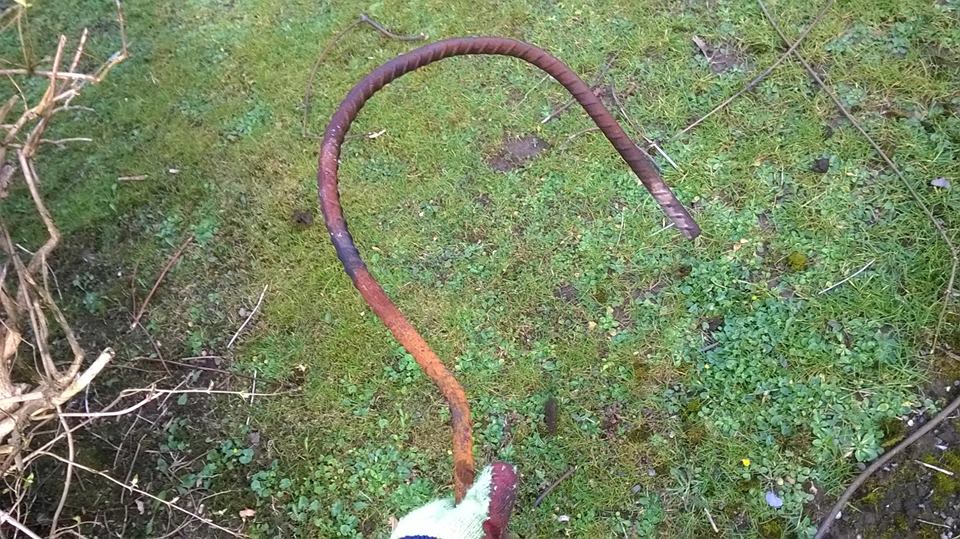My shepherd's hook for pulling down the overgrown sycamore in the back garden. The plan was to cut low and reach high with the 20 foot hook to get leverage, without having to climb up to tie ropes.
The hook was made from a 6m length of 12mm rebar, with a loop at one end for hooking around limbs and a smaller loop at the other end for attaching a rope. Unlike a rope, the hook was rigid and could be extended high up into the crown, without having to do any climbing.
One 8" bough down, about 8 more to go. This one managed to land on a sheet of steel that sliced into it.
I decided to make a rope saw for cutting through some of the limbs that were nearly vertical. It would have been dangerous to cut these with a chainsaw while I was up the tree. Using a rope saw was slow and hard work but really safe because limbs could be cut remotely and pulled down using a long rope and my sheperd's hook. The saw was made from an old chain saw chain. I cut one of the links with an angle grinder and opened it out, then attached the ropes to rings passed through link holes in the ends of the chain.
Finally finished cutting!
Lots of logs to cut up.
I chipped all the branches. They can be used as fuel on a stove or as a mulch in the garden for suppressing weeds.
By winter last year after a warm summer, the tree had put on 6 feet of new growth. Looks as if I'll have to do more lopping this year!























